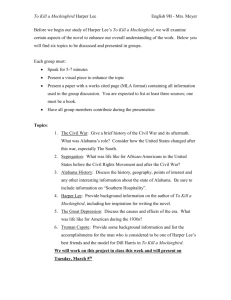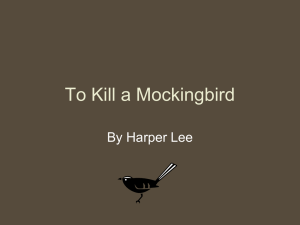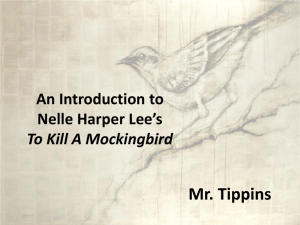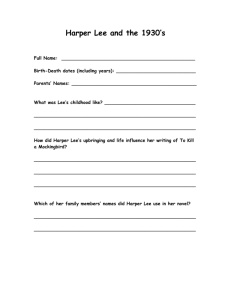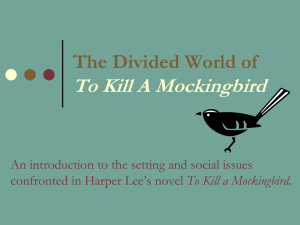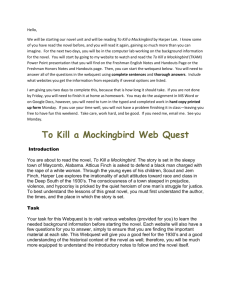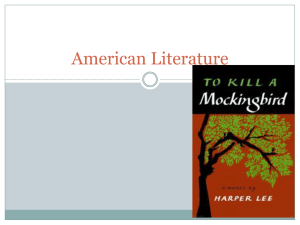To Kill a Mockingbird - Pennsbury School District
advertisement
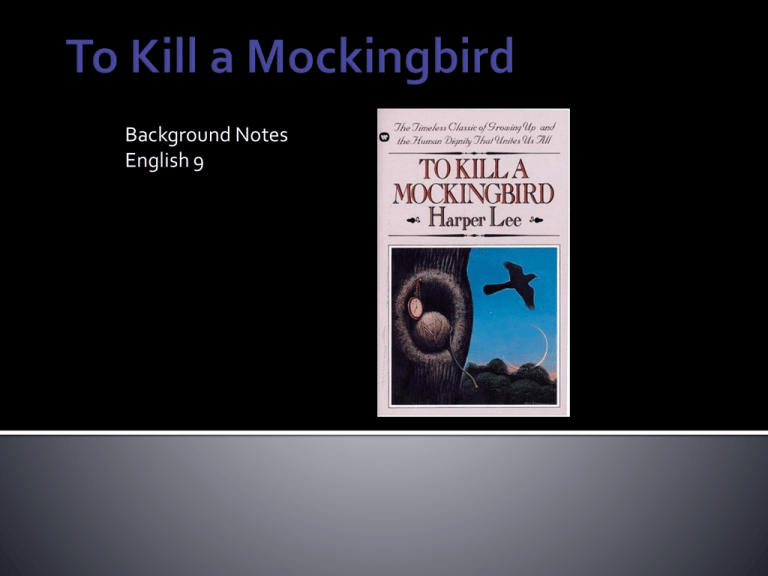
Background Notes English 9 Born in Monroeville, Alabama in 1926, she would have been the same age as Scout when the novel takes place. Lee’s father was a small-town lawyer just like Atticus Finch, and she spent many hours at the courthouse with her father just like Scout. Harper Lee’s close childhood friend was Truman Capote (“A Christmas Memory”), and it has been said that he was the inspiration for Dill’s character. Finally, Harper Lee’s mother’s maiden name was “Finch.” It has been said that Harper Lee modeled the character of Scout Finch (the narrator) after herself. In April 1931, in Scottsboro, Alabama, nine African-American men were tried for raping two women. Medical testimony showed that the two women were not actually raped, but the jury still convicted the men and sentenced them to death. Most of the convictions were eventually overturned and the men were freed from prison. However, this trial had a significant impact on Lee, and it serves as the basis for the trial in To Kill a Mockingbird. The plantation owners and professionals made up the upper class. Most landowners became prominent businessmen by the early 1900’s due to more commercialized farming. The middle class consisted of owners of small farms and small-town business owners. A new lower class emerged that included African-American farmers and unskilled laborers. In the 1930’s, the American South was immersed in the Great Depression Poverty and unemployment were rampant The average income in 1929 was about $750 All social classes are represented in the novel: The Finches – upper-middle class Ewells – poor whites Calpurnia and The Robinsons – African-American laborers = poorest class The upper class consisted of people whose families had lived in the same area for generations (Finch’s Landing). These people had African-American servants in their homes (Calpurnia). Southerners tended to use their ancestry as a way to separate the elite from the common folk (Aunt Alexandra). The most significant social issue of the South during the 1930’s was segregation. Laws forbid African-Americans and whites from mixing in public areas, such as schools, restrooms, buses and trains. Because of segregation, many AfricanAmericans were often convicted of crimes of which they were not actually guilty. To Kill a Mockingbird was published in 1960 during a time of turbulent civil protest with Alabama seen as a segregated state. The novel quickly rose to the top of every bestseller list and stayed there for over a year and a half! Many critics hailed the novel as an accurate portrayal of the racist discrimination of the South. Harper Lee chose to write To Kill a Mockingbird in a first-person narrative. Scout Finch, who is six-years-old at the beginning of the novel, is the narrator. This is significant because it allows for a child’s innocence to explain the complex social issues of racial prejudice. In addition, it is important to note that the novel is told in flashback by a much older Scout. Loss of innocence Deceptive Appearances Racism/Prejudice Courage/Bravery

